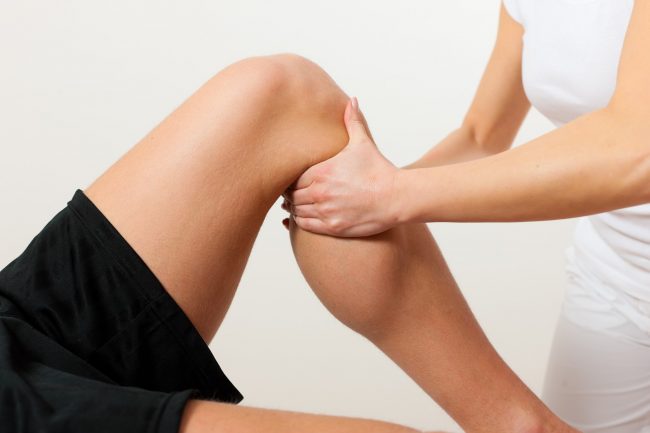Patellar Tendinopathy (aka Patellar Tendinitis or Jumper’s Knee)
Published on
12 Oct 2015

Call us on: (03) 9975 4133
The patellar tendon is a strong, thick tendon that sits just below your kneecap at the front of your knee. It is responsible for transferring the load from your powerful quadriceps muscles to your shin.
What is the patellar tendon and what goes wrong?
The patellar tendon is a strong, thick tendon that sits just below your kneecap at the front of your knee. It is responsible for transferring the load from your powerful quadriceps muscles to your shin. Huge loads pass through it during activities such as running and going up and down stairs, and even more so with jumping and landing. Like all tendons, the patella tendon is capable of adapting to become stronger with an appropriate training program. However, this takes time. If you increase loads too quickly the tendon begins to fail, and inflammatory and degenerative processes will commence and lead to pain.
What are the common signs and symptoms?
Pain is typically reported just below the kneecap and usually develops slowly over several days/weeks, typically whilst an athlete is increasing their exercise or sporting loads. It is often worse first thing in the morning, tends to feel a bit better after ‘warming up’ with exercise, only to feel much worse after cooling down. Resting from exercise/sport may reduce symptoms in the short term, but they commonly come back worse once the athlete attempts to return to sport.
Who gets it?
People who play sports that involve a lot of jumping are particularly prone to suffering from this condition (hence why it is commonly referred to as ‘Jumper’s Knee’). Up to 44% of volleyball players and 32% of basketball players will suffer from this injury at some point during their careers. It also affects other sports, with 2.5% of soccer players experiencing the pain–a much lower percentage than the jumping sports but still a huge number of people running around on sore knees when you consider how popular soccer is!
How do we fix it?
Tendon loading programs
A survey of sportspeople who retired from their sport due to the condition revealed that 55% still had pain going up and down stairs 15 years later; thus stopping your sport is clearly not enough to eliminate the pain. Some of the world’s leading researchers on this condition are based here in Melbourne and have found that significant, long-term improvements consistently occur with appropriate strengthening/rehabilitation programs. The mainstay of rehab for the last decade has been eccentric squats on a decline board.
Several studies have shown that a 12-week strengthening program can significantly improve symptoms. A study that compared this program to a group who received surgery found that both groups had improved exactly the same amount 12 months later. Given the risks associated with invasive surgery, a strengthening program should always be the first line of treatment! Recent studies have also found that heavy gym based exercises, as well as isometric contractions (long periods holding in a sustained contraction) can also be effective in reducing tendon pain. The key is getting the type and amount of loading appropriate for your tendon through a program designed by an experienced physiotherapist.
Biomechanical analysis/modification
Several biomechanical factors can result in an increased load running through your patellar tendon. Weakness through gluteal, core and quadriceps muscles, tightness through hips, hamstrings and calves, or abhorrent foot posture all can significantly contribute to the problem. Once identified, these areas should be targeted by specific rehab exercises as well.
Get on top of it now!
Our physiotherapists are experts at diagnosing, treating and rehabilitating patellar tendinopathy. Research shows that rehab programs conducted in the off-season are much more effective than those completed during peak competition. This means that now is the perfect time to address the problem if you are a winter sport athlete. Don’t leave it too late; I can assure you that you’ll thank yourself later!
By Pat Arnold


